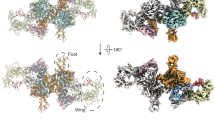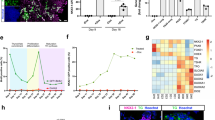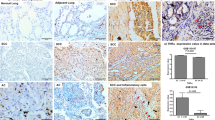Abstract
Summary: The role of thyroxine (T4) in fetal lung development has been demonstrated previously. Because triiodothyronine (T3), not T4, is thought to be the active hormone, and because T3 nuclear receptors appear to be present in fetal lung, the following studies were performed to examine peripheral metabolism of [125I]T4 by organotypic and mixed monolayer cultures of fetal lung cells. The cells were derived from fetal rat lungs obtained at 16 and 19 days of gestation.
Short term (2 h) incubations of homogenized organotypic cultures and mixed monolayer cultures with [125I]T4 showed minimal amounts of [125]T3 generation expressed as % added T4 per mg protein (0.43 ± 0.32 and 0.56 ± 0.28, respectively). In addition, there appeared to be “excess iodide” (2.21) and substantial generation of rT3 (i.e., 2.67 ± 1.1 and 1.87 ± 1.0, respectively).
In a subsequent group of experiments, deiodination of [125I]T4 was allowed to proceed by incubating intact organotypic cultures with [125IT4 for longer periods (36 h). Subsequent assessment and comparison of deiodination products in the subcellular fractions showed that the highest % of [125I]T3 (relative to total thyronines) was present in the fraction enriched with nuclei (7.7 ± 2.3). This was significantly different from the [125I]T3 in homogenized whole cells (4.54 ± 1.5), and markedly different from the medium which contained the lowest % of [125I]T3 (0.18 ± 0.2). Further confirmation was obtained to show that this high concentration of [125I]T3 in the nuclear fraction had in fact been generated de novo and did not merely result from redistribution of labeled hormones among the cellular compartments. Incubation of organotypic cultures with two different isotopically-labeled hormones ([131I]T3 and [125I]T4) permitted calculation of nuclear to medium ratios for [131I]T3 and [125I]T3; the ratio of these provided an index of intracellular conversion of [125I]T4 to [125I]T3. The mean of five such experiments demonstrated that of the total [125I]T3 attached to the nuclear fraction at the end of the incubation, 32% was newly generated and 68% was derived by influx from the medium. These results indicate that organotypic cultures derived from day 19 fetal rat lung are capable of deiodinating T4 and that both rT3 and T3 are generated. The generated T3 appears to be retained by the lung cells and is bound to the nuclear fraction. On the other hand, rT3 is distributed more evenly throughout the cell and in the medium and presumably is not bound.
Similar content being viewed by others
Log in or create a free account to read this content
Gain free access to this article, as well as selected content from this journal and more on nature.com
or
Author information
Authors and Affiliations
Rights and permissions
About this article
Cite this article
Segall-Blank, M., Douglas, W., Sanders, R. et al. Thyroxine Metabolism in Cultured Cells Derived from Fetal Rat Lung. Pediatr Res 17, 596–601 (1983). https://doi.org/10.1203/00006450-198307000-00016
Issue date:
DOI: https://doi.org/10.1203/00006450-198307000-00016



